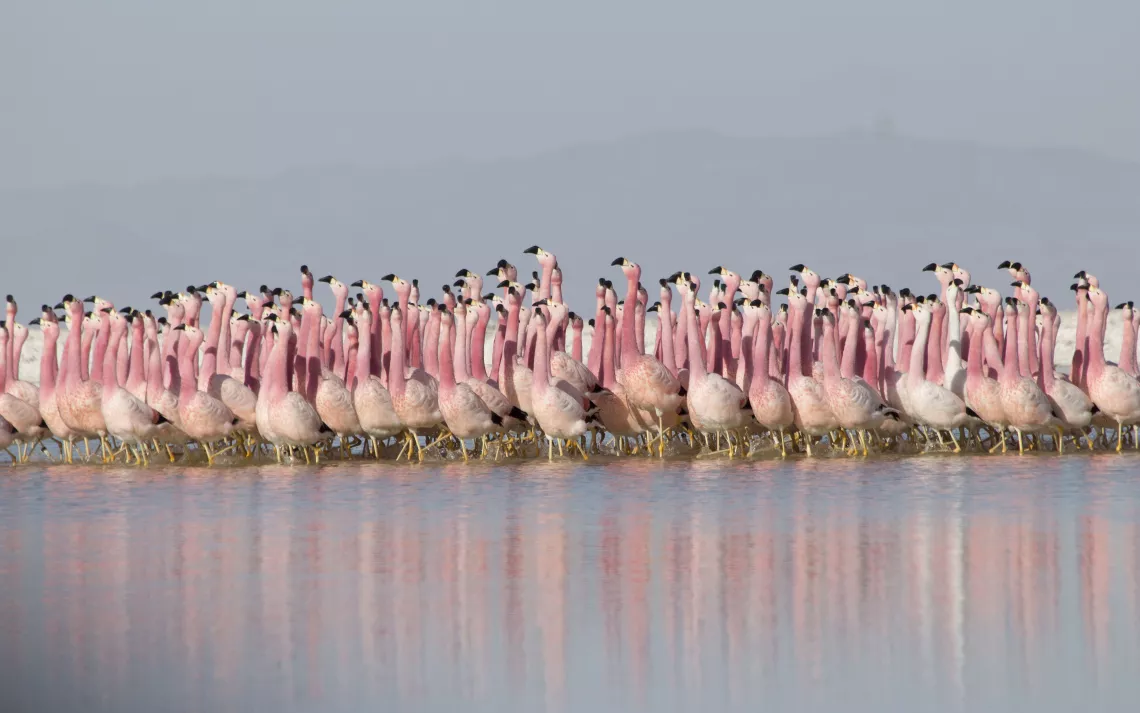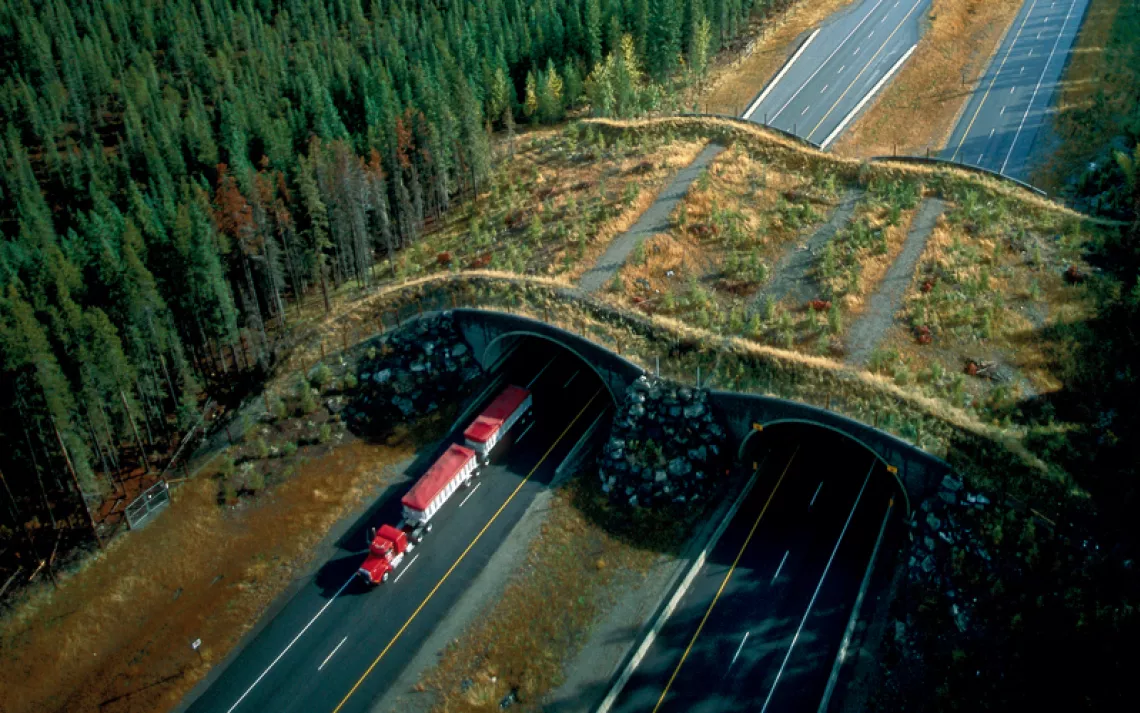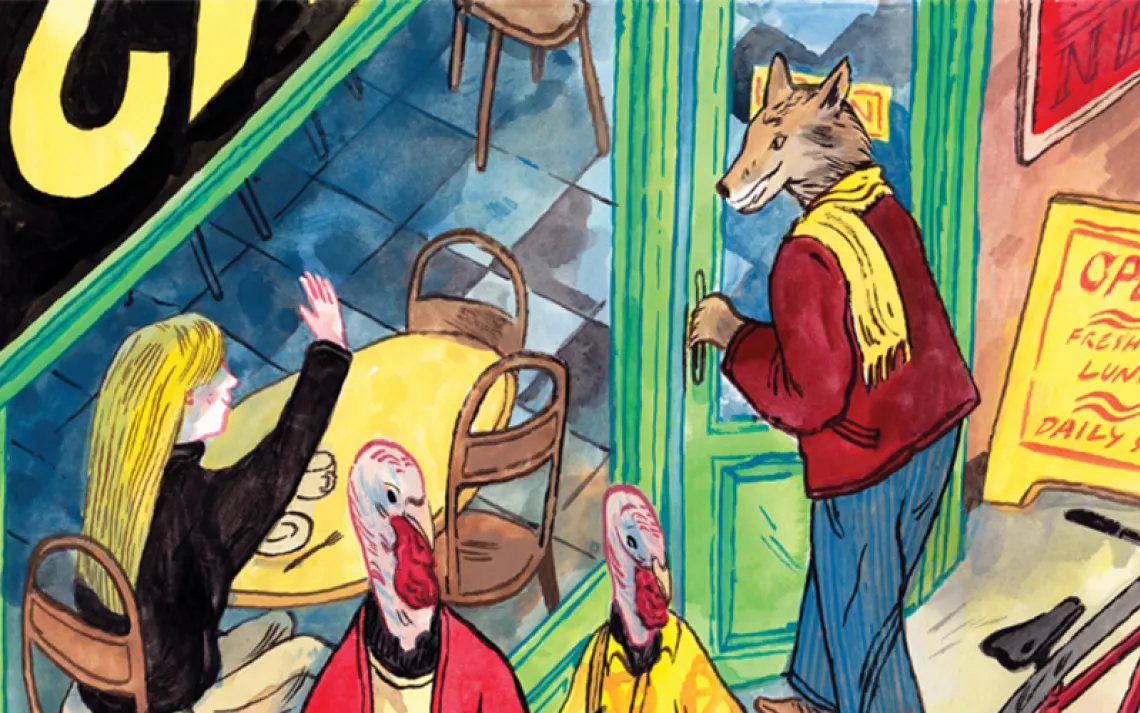Executive Producer Mike Gunton Talks About Planet Earth II
Find out why storytelling can be crucial to conservation—and catch a sneak peak into the second season of BBC’s blockbuster docu-series

Photo courtesy of Justin Anderson/BBC
In 2006, Planet Earth helped audiences appreciate the fascinating breadth of biodiversity that exists in the rainforests, caves, and remote ice worlds of this place we call home. The first episode of Planet Earth II, which premiered February 18 on BBC America, made clear that much has changed in the sphere of filmmaking—and of course, on the planet itself—in the decade since the landmark docu-nature series was first made.
Earth’s condition is now more critical, and increasingly fragile. Yet, BBC filmmakers have figured out how to get close to her in ways that would have been impossible 10 years ago. Fluid camera work, coupled with a crafty use of drones, puts viewers on the backs of soaring eagles and alongside Arctic penguins, leaping leopards, and rare dolphins. Captured in 4K resolution, the latest “ultra” in high-def technology, the six episodes comprising Planet Earth II highlight the rapidly changing planetary forces shaping life for animals in key habitats: islands, mountains, jungles, grasslands, deserts, and cities. It’s one of the most compelling examinations to date of how the animal kingdom is facing down climate change.
Planet Earth II’s visuals are nothing short of breathtaking. The power of the series, however, lies in its storytelling—each episode treats animals as relatable protagonists on an epic journey, leaving audiences rooting for them to triumph over the challenges threatening their habitats.
Naturalist Sir David Attenborough is back to narrate, and BBC creative director Mike Gunton returns as executive producer. Gunton, who has overseen more than 120 wildlife films, including the Emmy Award-winning One Life, says that in many ways Planet Earth II is his greatest achievement.
I spoke with Gunton over the phone from his studio in England about the extraordinary challenge of capturing candid animals—and about how he hopes that this will help shape humans’ relationships with the natural world.
—Katie O’Reilly
Tell me about the overarching objective of this second series. Did you set out to address climate change, or did that come up more organically during the production process?
Both, a bit. I think we all felt that taking on the mantle of climate change was quite daunting, because of its extraordinary impact and legacy. As David Attenborough says in the opening, there were a number of reasons we wanted to do an update. We couldn’t really make the series without some kind of reflection on all these shifting places and habitats, but we wanted to focus on the hope of how these extraordinary animals are facing incredible challenges in nature. So, the focus this time wasn’t really on the planet Earth, but rather on how animals cope with the challenges that Mother Nature—rather than humanity—puts in their path. So, we selected specific habitats as exemplars.
With islands, for instance, the critical challenge is invasive species, because [island creatures] are so susceptible to them. Desertification—the expansion of the desert—is a major challenge, too, and we wanted to do more than take a handbrake turn and say, “We’re going to tell you how bad this is now.” We wanted to do a story about the extraordinary twists in the tale of nature—how one small thing, say, the arrival of aggressive ants, can turn creatures’ worlds upside down—and then show that aha moment when they figure out how to confront those challenges.
Tell me about the choice of habitat for the final episode. To what extent was portrayal of animal life in cities an attempt to reinforce the fact that human activities and manufactured landscapes have such strong impact on the natural world?
We knew we couldn’t do an iteration of Planet Earth without acknowledging that there’s a new habitat on Earth, and that it’s becoming a dominant habitat. So, we went ahead and treated cities like a wildlife habitat—evoking that sort of glamour [laughs] to show that animals today have developed the abilities to coexist with people in those cities.
By treating animals and humans as one and the same, we develop a new kind of empathy toward animals. How intentional was this?
In telling revelatory, dramatic, exciting stories about nature, we are indeed trying to nourish an empathetic relationship between the audience and the animals. That was a big part of our technological and digital approach—we sought to use cameras that would get us closer to the animals than ever before. This aided our storytelling approach, which was intentional—because it’s largely the stories that generate empathy. Once you have that in place, the audience makes the connection themselves; we don’t have to do it.
Tell me about the research and planning that went into this series. Would you film the animals first, and then plot out the stories, or would you start with the stories themselves?
If you don’t plan the stories first, it’s absolute madness! We very much have a precise structure—nature films work well with stories, but you have to be hard-nosed about which you choose. You can’t mess around; you’ve got to know you can get it right. So, we had to think very hard about the parameters of each story we wanted to tell. What’s the biological story? What kind of animal? What kind of habitat? Do you want a happy story? Dramatic? A hunting action sequence? You aim for a checkerboard of that matrix—the natural world offers elements of all types, and you want to offer the audience a broad sense of the full spectrum of dynamics going on out there. We had very clear ideas about the format. Of course, you can write a great script, but the animals unfortunately don’t read them—they do what they’re going to do. The iguana racer snake story, for instance, was not expected at all. We knew those iguanas would hatch, and we knew they were predators, but we had no idea they’d come out in such huge numbers, or that such a tremendous game would unfold. It takes a lot of planning and precision and serendipity and patience and luck, and hopefully, if you do your homework, you get lucky
How did you decide which types of wildlife you wanted to capture on film? How did you even know about species such as the araguaian river dolphin?
The research phase is long—it was ongoing throughout all four years of making this, and for at least six months before that. The guiding watchword for us is newness. We sought new perspectives, new animals, new behavior, and new ways of connecting through stories. So it’s a very iterative process. You start off with quite a big jigsaw of pieces, and then you keep moving them around—“That’s good, that’s not; oh, this will work instead!”—and you start to build your jigsaw. In the end, you have to say, “Right, these are the 14 stories we’re going to go for.” Part of what you have to do is accept risk, and accept that you may fail, because you’re often shooting stories in places where people haven’t been before. We rely on a lot of scientific backup, but sometimes there is none! So you find yourself trying to find out for yourself where the behavior’s happening, and where’s the best place to put the cameras. But often, the weather turns against you, or the animals unexpectedly disappear. So, we do fail often. That’s part of it—you have to invest significant money and time and risk into this to get it right at all.
With production running more than four years, and with footage shot in 40 countries over the course of 117 filming locations, you had the enviable role of being present for many trips. Which filming experience most impacted you personally?
It was actually one I didn’t experience firsthand: the snow leopard sequence [from episode 2: “Mountains”]. That experience—the situation, the animals, and the story—is probably one of the greatest achievements of the team. I can’t take credit, but I’m so proud of the team. That’s because snow leopards are notoriously difficult to track down and evasive, and there aren’t many of them in existence. Attenborough has written scripts involving snow leopards for about 30 years and never before had the opportunity to actually film them. So being able to tell their story, thanks to technological advancements, was huge. If I have one last hurrah as a filmmaker, I hope I’ll go to that location and see them with my own eyes. Ironically, however, the way the team accomplished that was by not being there—by instead using remotely operated camera traps, placed where we know they’ll go. As they approach, these cameras’ sensors switch them on and film the animal doing what it’s doing. So, the snow leopards are effectively filming themselves! The great skill involved there lies in predicting where they’ll be, from filmmakers who are back in England. Afterward, they go back and collect the data cards and look at the coverage. Oftentimes, there’s absolutely nothing, and sometimes there are even teeth marks on the cameras. But then sometimes, you get these amazing moments—when a cat comes out, looks around, and meows, it’s utterly, utterly extraordinary.
The remaining episodes of Planet Earth II will air Saturdays at 9/8c on BBC America. Check out a trailer of Planet Earth II here, and read Sierra's review of it (from the March/April 2017 issue) here. Follow #PlanetEarth2 via BBC America on Twitter, Instagram, Facebook, and Tumblr.
 The Magazine of The Sierra Club
The Magazine of The Sierra Club







